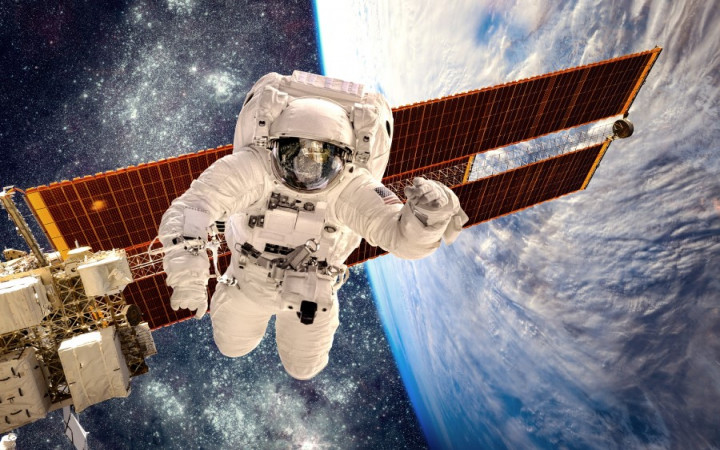Today’s Wonder of the Day was inspired by Sarah from Houston , TX. Sarah Wonders, “How do the astronauts build a space center in space? ” Thanks for WONDERing with us, Sarah !
What’s that up there? Right there! Way up high in the sky, there’s a bright dot moving slowly across the black canvas of the heavens. It’s way too high to be an airplane, and it’s too steady to be a shooting star. What could it be? It’s the International Space Station, of course!
Visible from Earth with the naked eye, the International Space Station (ISS) is a habitable satellite. It serves as a microgravity laboratory in space. At costs approaching $150 billion, the ISS is arguably the most expensive thing ever built. It’s also the largest structure ever built in space by humans.
On the ISS, a rotating crew of international astronauts conducts science experiments. These cover a wide range of disciplines, from astronomy and biology to geology and physics. The ISS completes 15.5 orbits around Earth each day. That means astronauts enjoy a sunrise or sunset about every 92 minutes.
How can the ISS orbit Earth so quickly? Orbiting at an average altitude of 248 miles above Earth, the ISS travels approximately 17,500 miles per hour. That’s a rate of about five miles per second! Each day, the ISS travels a distance nearly equal to traveling from Earth to the Moon and back.
Despite its speed, the ISS is visible from Earth with the naked eye. You just need to know when and where to look. That’s because the ISS is so big. How big? The ISS consists of modules and connecting nodes that house living quarters and laboratories. It also has large exterior trusses for support, as well as more than an acre of solar panels that provide power.
In total, the ISS is a little bigger than an American football field. It weighs approximately 900,000 pounds. Inside, there are two bathrooms, a gymnasium, and the living space of about a six-bedroom house.
So how did such a humongous man-made object get into space? It would be impossible to launch such a huge object with modern technology. That’s why the ISS was built slowly, piece-by-piece. Five different space agencies representing 15 different countries worked on the project.
The first piece, Russia’s Zarya module, was launched into space in 1998. Over time, other modules were launched via rockets and the United States space shuttle program. Astronauts connected all the pieces over the course of several missions. The ISS has been continuously occupied since November 2000.
Since that time, more than 200 astronauts from 15 different countries have visited the ISS. Space agencies hope to continue to use the ISS for many years to come. In fact, there are current plans to add even more modules in the coming years.
Have you ever spotted the ISS in the night sky? Would you like to live aboard this space station one day? Anything is possible! As astronauts add to the ISS, it could grow to hold even more experts from all over the world.
Standards: NGSS.ESS1.A, CCRA.L.3, CCRA.L.6, CCRA.R.1, CCRA.R.2, CCRA.R.4, CCRA.R.10, CCRA.SL.1, CCRA.W.2, CCRA.W.4, CCRA.W.9, CCRA.L.1, CCRA.L.2





